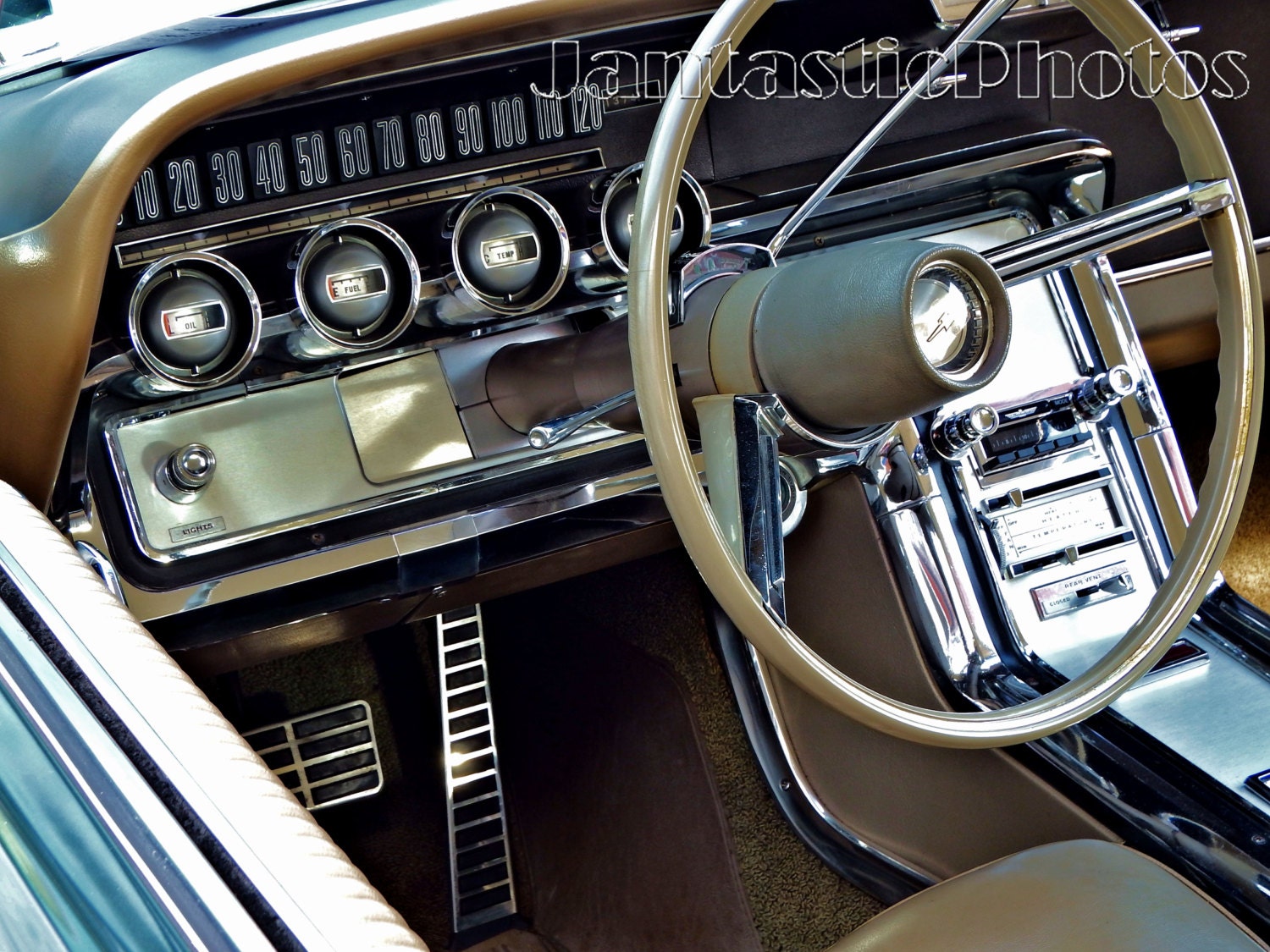

These chairs have tuck and roll in seats and smooth bolsters. Inside a seamless console races through the back vinyl buckets in low back form. The T Birds of yore are famous for utilizing a band of brushed or machined aluminum that starts on the door panels and runs through the dash, and this car uses a satin finished brushed aluminum which runs through the doors with black vinyl uppers and armrest, and a band of black carpeting below. Turbine style wheel coverings have faux knockoff hubs and thin whitewalls on all 4 corners of this neat design car. A nice slowly curing downward rear deck meets up with a horizontal rear deck panel that houses sequential taillights, emulating the front with the wide mouth design. This 4-door version has suicide doors for the rear openings. On top is a Cayman grain vinyl top in black and it sports landau bars on the rear pillars. There are nice trimmings around the glass and a stainless rocker graces the line from the front bumper and stretches the length of the car. All straight steel panels are bathed in factory Medium Palomino Metallic. A long sleek T bird badge is in the center. A curved upward on the edge bumper below is nice and shiny, and the curved down on the edges hood meet at the front quarter panel beginnings. This example is in original condition, nicely preserved with sequential taillights, hidden headlights that actually un hide, disc brakes for the front, and suicide rear doors sharing a common B pillar.įor the front grille design think largemouth bass with its wide mouth egg crate grille with hidden headlights covered in the egg crate to create the illusion that there are no headlights. That and the survival rate of these cars is low due to rust issues. Among the least appreciated Thunderbird generations is the 1966–71 car, affectionately, (or maybe sarcastically), referred to as the “Glamour Bird.”įor consignment something not oft seen, possibly due to its obscurity in the lineup of Bird designs. Band codes are also found on page 219 and 262 of the restoration manual.The car took on many guises over half a century, with “Baby Birds” (1955–57), “Square Birds” (1958–60), “Bullet Birds” (1961–63), and even “Super Birds” (1989–97).
#67 thunderbird dashboard code
The heater control is held in place from the back side of the dash by two retainers, one on each side, as shown in photo #6.įirst remove the three wire control cables from the control levers, note the color code wire band on the end of each cable tubing shield so that you can replace them in the same positions. Push the radio forward drop the end down, and rotate the radio assembly to remove it from under the dash. Then remove the shaft nuts that were exposed when the knobs were removed. The next step is to remove the mounting bracket retainer nuts – one on each side of the radio.

Remove the electrical connections to the radio. NOTE: use caution not to break the three-prong pin retainer on the speaker wire. Then go under the dash and remove the antenna wire and speaker wire by pulling them out. The radio can be taken out by first removing the control knob set screws and pulling knobs off. Once the sleeve is removed the lighter assembly can be pushed out of the dash. The lighter assembly can be removed by going under the dash to disconnect the power wire, then turn the sleeve housing (under the dash) counter-clockwise to remove it.


 0 kommentar(er)
0 kommentar(er)
